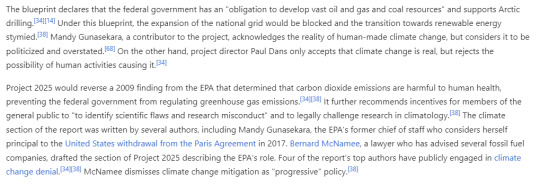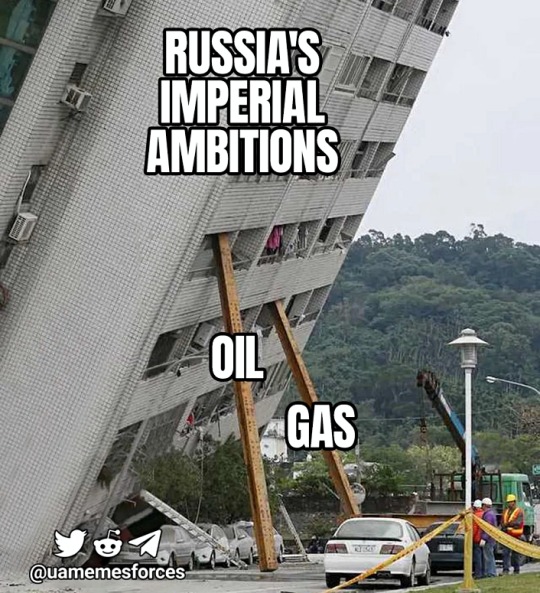#fossil fuel usage
Explore tagged Tumblr posts
Text
I actually side with Toyota on this one, in spite of my passion for electric cars. Both our battery technology and our infrastructure need to be improved before we can go with a 100% electric automobile fleet. Meanwhile, I prefer plug-in hybrids as a bridge technology. Our plug-in charges at home, and handles most of our driving as an EV, carrying about 1/8 as much battery payload as a similar-sized full electric. And I don’t require major infrastructure changes in order to take a trouble-free vacation trip. And at least 75% of our miles are pure electric.
In terms of battery cost and resources used, 1 Tesla = 8 plug-in hybrids, for the same amount of lithium-ion batteries.
Or for fossil fuel consumption, 4 plug-in hybrids = 1 conventional automobile (assuming most of your electricity comes from non-fossil fuel sources)
Or for purchase cost, 1 Tesla = 1.5 - 2 plug-in hybrids. (Some other electric cars are quite a bit cheaper though)
NOTE: These are my own back of the envelope statistics. If you take repeated long trips, or your electricity comes largely from fossil fuels, a plug-in hybrid may not be much help. But the pure EV could look even worse by comparison.
#tesla#Toyota#plug in hybrids#fossil fuel usage#electricity generation#comparative economy#green footprint
7 notes
·
View notes
Text
Cliches may be true. February 3rd Rock Farm Report.
Propane bottles lovingly labelled. TS' baking (again). Nice!!
#avenirenergy.ca#baking#cold weather and propane#dailyprompt#dailyprompt-1838#Evolve Builders Group#fossil fuel usage#frustration#GENERAC#isolated-work-site#Muhammad Ali#off-grid#propane usage
0 notes
Text
sigh im such a tortured poet....

#like okay girl and the planet is also tortured by ur fossil fuel usage#like sorry i dont think anyone with one billion dollars can be tortured#and im srs abt that#.hellwurld#discourse#taylor swift#<- for my tagging sorry guys#taylor swift critical
20 notes
·
View notes
Text
I am cursed to get unreasonably angry when people say very incorrect things about weather & climate :) and I keep seeing people posting variations of "ai is why california is on fire" :) this is the hurricanes all over again. people don't know how the atmosphere works. I'm going to scream
#whatever amount of energy ai is contributing to the atmosphere it is literally too soon to see the results#and btw it wouldn't be much#because there are other things that spew way more greenhouse gases#it'd be more helpful to go after fossil fuel usage#it'd also be more helpful to go after capitalism and those that uphold it#maybe i'm too autistic about weather & climate but like oh my fucking god
6 notes
·
View notes
Text
"A 1-megawatt sand battery that can store up to 100 megawatt hours of thermal energy will be 10 times larger than a prototype already in use.
The new sand battery will eliminate the need for oil-based energy consumption for the entire town of town of Pornainen, Finland.
Sand gets charged with clean electricity and stored for use within a local grid.
Finland is doing sand batteries big. Polar Night Energy already showed off an early commercialized version of a sand battery in Kankaanpää in 2022, but a new sand battery 10 times that size is about to fully rid the town of Pornainen, Finland of its need for oil-based energy.
In cooperation with the local Finnish district heating company Loviisan Lämpö, Polar Night Energy will develop a 1-megawatt sand battery capable of storing up to 100 megawatt hours of thermal energy.
“With the sand battery,” Mikko Paajanen, CEO of Loviisan Lämpö, said in a statement, “we can significantly reduce energy produced by combustion and completely eliminate the use of oil.”
Polar Night Energy introduced the first commercial sand battery in 2022, with local energy utility Vatajankoski. “Its main purpose is to work as a high-power and high-capacity reservoir for excess wind and solar energy,” Markku Ylönen, Polar Nigh Energy’s co-founder and CTO, said in a statement at the time. “The energy is stored as heat, which can be used to heat homes, or to provide hot steam and high temperature process heat to industries that are often fossil-fuel dependent.” ...
Sand—a high-density, low-cost material that the construction industry discards [Note: 6/13/24: Turns out that's not true! See note at the bottom for more info.] —is a solid material that can heat to well above the boiling point of water and can store several times the amount of energy of a water tank. While sand doesn’t store electricity, it stores energy in the form of heat. To mine the heat, cool air blows through pipes, heating up as it passes through the unit. It can then be used to convert water into steam or heat water in an air-to-water heat exchanger. The heat can also be converted back to electricity, albeit with electricity losses, through the use of a turbine.
In Pornainen, Paajanen believes that—just by switching to a sand battery—the town can achieve a nearly 70 percent reduction in emissions from the district heating network and keep about 160 tons of carbon dioxide out of the atmosphere annually. In addition to eliminating the usage of oil, they expect to decrease woodchip combustion by about 60 percent.
The sand battery will arrive ready for use, about 42 feet tall and 49 feet wide. The new project’s thermal storage medium is largely comprised of soapstone, a byproduct of Tulikivi’s production of heat-retaining fireplaces. It should take about 13 months to get the new project online, but once it’s up and running, the Pornainen battery will provide thermal energy storage capacity capable of meeting almost one month of summer heat demand and one week of winter heat demand without recharging.
“We want to enable the growth of renewable energy,” Paajanen said. “The sand battery is designed to participate in all Fingrid’s reserve and balancing power markets. It helps to keep the electricity grid balanced as the share of wind and solar energy in the grid increases.”"
-via Popular Mechanics, March 13, 2024
--
Note: I've been keeping an eye on sand batteries for a while, and this is really exciting to see. We need alternatives to lithium batteries ASAP, due to the grave human rights abuses and environmental damage caused by lithium mining, and sand batteries look like a really good solution for grid-scale energy storage.
--
Note 6/13/24: Unfortunately, turns out there are substantial issues with sand batteries as well, due to sand scarcity. More details from a lovely asker here, sources on sand scarcity being a thing at the links: x, x, x, x, x
#sand#sand battery#lithium#lithium battery#batteries#technology news#renewable energy#clean energy#fossil fuels#renewables#finland#good news#hope#climate hope
1K notes
·
View notes
Text
more words for worldbuilding (pt. 2)
ANIMALS
Animal: adult, beast, buck, cat, chicken, cur, father, frog, goat, half-breed, horse, hybrid, litter, mongrel, monster, parasite, pig, stock, young
Bird: bird, chicken
Fish: aquarium, aquatic
Group of animals: drove, herd, insect, pack, stock, team
Insect: bee, grub, pest
Limb or appendage of: bill, coat, feather, fur, mop, pelt, scale, trunk, wing
Mammal: cat, dog, father, goat, hound, mother, pig
CLOTHING
Accessory: bag, belt, buckle, collar, pocketbook, purse, satchel
Clothing: apparel, array, bathing suit, cape, clothes/clothing, costume, dress, dungarees, falsies, frock, garment, girdle, gown, hat, jacket, negligee, nylons, pajamas, pants, quilt, scarf, skirt, suit, swimsuit, thing/things, trappings, underwear, veil, wash, wrap
Part: collar, crown, pocket, strand, tiara
State of dress: bareness, nudity, try on/try out, wear
FOOD & DRINK
Beverage: alcohol, coffee, drink, potable
Beverage, alcoholic: beer, liquor
Change in: curdle, turn
Food: appetizer, bite, brew, bun, casserole, condiment, cracker, diet, doughnut, feed, frosting, grub, helping, hors d’oeuvre, leftover, macaroni, meat, nosh, nurture, nutrition, pastry, produce, refreshment, seasoning, stew, subsistence, support, sweet, treat, vittles
Food part: morsel, nip, taste, tidbit
Meal: banquet, bite, buffet, diet, fare, picnic, repast, spread, table
Produced from animal: comfort food, feed, food, frosting, grub, hero, macaroni, sandwich, submarine, vittles
Produced from plant: condiment, doughnut, loaf, pastry, produce, sweet
Quality of: acerbity, baked, done, edible, mellow, nourishing, perishable, rare, ripe, salty, short, stale, strong, sweet, unappetizing, weak, wholesome
NATURAL RESOURCES
Electricity: beam, spark
Energy: electricity, fuel, nuclear energy, petroleum, power
Expression of energy: blast, bonfire, chill, concussion, discharge, fire, flash, noise, thunder
Natural event: eclipse, meteorology, weather
Resources: fuel, resource, rock, substance
PLANTS
Flower: bloom, bouquet, flower
Fruit: berry, produce
Growth or death of: bloom, bud, germinate, growth, wilt, wither
Part: bark, branch, cereal, flavoring, foliage, grain, juice, limb, nut, pod, scion, shell, stalk, trunk
Plant: algae, bramble, bush, crop, fossil, grass, harvest, hybrid, organism, produce, wreath
Tree: timber, wood/woods
Vegetable: produce
WEATHER
Object connected with: avalanche, breeze, climate, cold, dew, film, flurry, frost, gust, haze, hurricane, meteorology, moisture, puff, thunder, weather, wind
Quality of: breezy, clear, close, crisp, dismal, fair, fiercely, fine, furious, gloomy, hazy, humid, intimidating, misty, oppressive, raw, rugged, soft, stormy, sultry, temperate, thick, tranquil, turbulent, wild, wintry
Type of: blizzard, cloud, drizzle, fog, hail, mist, puff, rain, shower, tempest, torrent, tremor
NOTE
Excerpted from Roget's 21st Century Thesaurus, Updated and Expanded 3rd Edition, in Dictionary Form, edited by The Princeton Language Institute.
The above are concepts classified according to subject and usage. It not only helps writers and thinkers to organize their ideas but leads them from those very ideas to the words that can best express them.
It was, in part, created to turn an idea into a specific word. By linking together the main entries that share similar concepts, the index makes possible creative semantic connections between words in our language, stimulating thought and broadening vocabulary. Writing Resources PDFs
Source ⚜ Writing Basics & Refreshers ⚜ On Vocabulary
#worldbuilding#vocabulary#langblr#writeblr#writing reference#spilled ink#creative writing#dark academia#setting#writers on tumblr#poets on tumblr#poetry#literature#writing tips#writing prompt#writing#words#lit#studyblr#fiction#light academia#nature#food#writing resources
449 notes
·
View notes
Text
having sex with an offshore oil rig but shaking my head the entire time so everyone knows i dont agree with fossil fuel usage or the oil industry
575 notes
·
View notes
Text
GENERATOR FOR HOME - SİLVER

In today’s ever-evolving world, finding reliable and sustainable power solutions for our homes is more crucial than ever. Enter Generator for Home – your one-stop resource for exploring a range of innovative generators designed to meet your energy needs. Whether you're seeking a traditional generator or a cutting-edge solar generator, we provide comprehensive insights to help you make informed decisions. Our product offers detailed overviews and specifications, ensuring you'll know exactly what you're investing in.
Generator for Home
A generator for home use is an essential resource that provides backup power during outages, ensuring that your daily activities are not severely disrupted. Here are some key aspects to consider when selecting a generator for home use:
Types of Generators
There are various types of generators available for residential use:
Portable Generators: These are lightweight and easy to move around, perfect for powering appliances during outages.
Standby Generators: Installed permanently outside your home, these generators automatically turn on during a power outage.
Solar Generators: Utilizing renewable energy, these generators are an eco-friendly option for homeowners looking to reduce their carbon footprint.
Power Requirements
When selecting a generator, it’s crucial to determine the wattage requirements of the appliances you plan to power. Calculate the starting and running watts of each device, adding them together to choose a generator with adequate capacity.
Fuel Type
Generators can run on various fuel types, including gasoline, diesel, propane, or natural gas. Each fuel type has its benefits and limitations. Consider availability and cost when making your choice.
Noise Levels
Noise levels can be a significant factor, especially for residential use. Look for generators designed to operate quietly, which can minimize disruption to your family and neighbors.
Safety Features
Safety should always come first. Opt for generators that include features such as automatic shut-off, circuit breakers, and carbon monoxide detectors to protect you and your home from hazards.
Understanding these facets of a generator for home use can significantly enhance your ability to choose the right model that meets your needs and enhances your home's resilience to power outages.
Solar Generator for Home
When considering a reliable power source for your home, a solar generator for home me can be an excellent option. It harnesses renewable energy from the sun, providing an eco-friendly and sustainable solution to meet your electrical needs. Unlike traditional generators that rely on fossil fuels, solar generators operate quietly and require minimal maintenance, making them an attractive choice for homeowners.
Benefits of Solar Generators
Environmentally Friendly: Solar generators produce clean energy, reducing your carbon footprint and dependency on non-renewable sources.
Energy Independence: By generating your own power, you can safeguard against rising electricity costs and power outages.
Low Operating Costs: Once installed, solar generators have low ongoing costs, primarily related to maintenance and occasional battery replacements.
Portability: Many solar generators are designed to be portable, allowing you to take power with you for camping trips or outdoor activities.
Choosing the Right Solar Generator
When selecting a solar generator for your home, consider the following factors:
Power Requirements: Assess your household's energy needs by evaluating the appliances and devices you intend to power.
Capacity: Look for generators with sufficient battery capacity to provide the necessary power for your usage.
Inverter Type: Choose between pure sine wave and modified sine wave inverters based on the devices you plan to use.
Portability: If you need a generator for occasional outdoor use, ensure it is lightweight and easy to transport.
Solar Panels and Accessories
To maximize the efficiency of your solar generator, consider investing in additional solar panels or accessories. This can enhance its capacity and charging speed, making it a more versatile solution for your energy needs.
In summary, a solar generator for home purposes is not only beneficial for reducing electricity bills but also plays a critical role in promoting sustainable energy. By integrating a solar generator into your household, you can enjoy a reliable and green power source that aligns with modern energy solutions.
305 notes
·
View notes
Text
Hi guys! I'm here to tell you about some of the stuff Project 2025 would do to America.

Number One: Making America a Christian Nation. What this means is the separation of church and state would be gone, and Trump will implement a "Bible-based system of government". Practicing other religions could be banned.


Number Two: Climate Change. Project 2025 will be completely removing most of the nation's regulations to help our environment. Abandoning ways to reduce greenhouse gases, abolishing the National Oceanic and Atmospheric Administration, relaxing regulations on fossil fuels, encouraging fossil fuel usage, and supporting arctic drilling.

Number 3: Letting states control education. No more nationwide education, every state chooses what it wants to do. Possibility of removing accommodation plans for students who need it, no more free school meals even for free and reduced lunch plans, and the quote "Education is a private rather than a public good."

Number 4: Giving the president more power. The branches of government are supposed to balance each other out, make sure no one branch gets too powerful. This will make that a lot harder.

Number 5: Foreign Affairs. Congressional approval would not be required for the sale of military equipment and ammunition to a foreign nation. Also "The word gender would be systematically purged from all USAID programs and documents"???? "Such aid will not be allocated for helping poorer countries address the impact of climate change; rather, it will be devoted to advancing the interests of fossil fuel companies"????

Number 6: Healthcare. Removing Medicare's ability to negotiate medicine prices, denying gender-affirming care to trans people, forcing people to have a nuclear family basically.

Number 7: All of this bullshit. It's all shit, but please take a look at the last sentence of paragraph 4: "Trump has also spoken of rounding up homeless people in blue cities and detaining them in camps."

Number 8: LGBTQ community. "Proposes the recognition of only heterosexual men and women, the removal of protection against discrimination on the basis of sexual or gender identity, and the elimination of provisions pertaining to diversity, equity, and inclusion (DEI) from federal legislation." "The goal here is to move toward colorblindness and to recognize that we need to have laws and policies that treat people like full human beings not reducible to categories, especially when it comes to race." THEN LET US BE WHO WE ARE. THIS IS THE OPPOSITE DIRECTION OF WHAT YOU ARE SAYING.

Number 9: Banning pornography. Just let people be people. We have needs. Let us be. Especially when Trump had that sneaky link that led him being charged on 34 counts.

Number 10: Abortion. Are we really going to let white males who don't know where the clitoris is decide what Women get to do with their bodies? You said in the pornography thing that it leads to the exploration of women, but isn't this doing the exact same thing?
In conclusion, Project 2025 would take away numerous rights that we deserve as human beings, including, but not limited to, having a clean environment, the right to an education, access to necessary medication, freedom of expression, sexual media, women's choice with their own bodies, and possibly freedom of religion, one of America's first amendment rights.
I'm scared. I am a queer minor with school accommodations, who has no way out of America.
I don't want to flunk out of high school because my accommodations got taken away from me.
I don't want to have a child at all, let alone before I turn 18 because I got raped and can't get an abortion because of what the government says I can and can't do with my body.
I don't want to be trapped in an area where I can barely breathe because of all the pollutants in the air.
I don't want to be discriminated against, harassed, or dehumanized because of my gender identity and sexuality.
I don't want to be forced to be a Christian.
I'm scared of my own country, and what it could do to me. I don't want to die.
Vote Blue. Or else America could be turned into a suppressive dictatorship.
Note: I will be unpinning this because there have been a lot of comments that make me think I may have said some things wrong in this post. I don't want to completely remove it, because a lot of people have reblogged it to spread information, but I will be removing it from my pin.
#project 2025#election 2024#american politics#us elections#2024 elections#vote blue no matter who#lgbt rights#queer rights#gay rights#education#abortion#environment#enviormentalism#religion#long post#rant#sort of#im scared#america#fuck america#fuck trump#fuck everything#i dont want to die#not like this
158 notes
·
View notes
Text
Thinking. {{{Insert spinning icon here}}}. Failed fossil fuel.
My salad days? Nahhhh. :-)
#avenirenergy.ca#baking#cats#Compaq#dailyprompt#dailyprompt-1835#damaged pressure regulators#DIY#fossil fuel usage#GENERAC#gratitude#https://www.designelectrical.ca/#https://www.tiffanystone.ca/about#humour#isolated-work-site#La Crosse Technology#Nathan Vanderschot#off-grid#propane usage#resiliance#sparlings fuel services#starlink isp#Tiffany Stone#Vancouver
0 notes
Text
According to Marx, metabolic rift appears in three different levels and forms. First and most fundamentally, metabolic rift is the material disruption of cyclical processes in natural metabolism under the regime of capital. Marx’s favourite example is the exhaustion of the soil by modern agriculture. Modern large-scale, industrial agriculture makes plants absorb soil nutrition as much as and as fast as possible so that they can be sold to customers in large cities even beyond national borders. It was Justus von Liebig’s Agricultural Chemistry (1862) and his theory of metabolism that prompted Marx to integrate an analysis of the ‘robbery’ system of agriculture into Capital. [...]
Liebig harshly criticized modern ‘robbery agriculture’ (Raubbau), which only aims at the maximization of short-term profit and lets plants absorb as many nutrients from the soil as possible without replenishing them. Market competition drives farmers to large-scale agriculture, intensifying land usage without sufficient management and care. As a consequence, modern capitalist agriculture created a dangerous disruption in the metabolic cycle of soil nutrients. [...]
Marx formulated the problem of soil exhaustion as a contradiction created by capitalist production in the metabolism between humans and nature. Insofar as value cannot fully take the metabolism between humans and nature into account and capitalist production prioritizes the infinite accumulation of value, the realization of sustainable production within capitalism faces insurmountable barriers.
This fundamental level of metabolic rift in the form of the disruption of material flow cannot occur without being supplemented and reinforced by two further dimensions. The second dimension of metabolic rift is the spatial rift. Marx highly valued Liebig in Capital because his Agricultural Chemistry provided a scientific foundation for his earlier critical analysis of the social division of labour, which he conceptualized as the ‘contradiction between town and country’ in The German Ideology. Liebig lamented that those crops that are sold in modern large cities do not return to the original soil after they are consumed by the workers. Instead, they flow into the rivers as sewage via water closets, only strengthening the tendency towards soil exhaustion.
This antagonistic spatial relationship between town and country – it can be called ‘spatial rift’ – is founded upon a violent process of so-called primitive accumulation accompanied by depeasantization and massive urban growth of the working-class population concentrated in large cities. This not only necessitates the long-distance transport of products but also significantly increases the demand for agricultural products in large cities, leading to continuous cropping without fallowing under large-scale agriculture, which is intensified even more through market competition. In other words, robbery agriculture does not exist without the social division of labour unique to capitalist production, which is based upon the concentration of the working class in large cities and the corresponding necessity for the constant transport of their food from the countryside. [...]
The third dimension of metabolic rift is the temporal rift. As is obvious from the slow formation of soil nutrients and fossil fuels and the accelerating circulation of capital, there emerges a rift between nature’s time and capital’s time. Capital constantly attempts to shorten its turnover time and maximize valorization in a given time – the shortening of turnover time is an effective way of increasing the quantity of profit in the face of the decreasing rate of profit. This process is accompanied by increasing demands for floating capital in the form of cheap and abundant raw and auxiliary materials. Furthermore, capital constantly revolutionizes the production process, augmenting productive forces with an unprecedented speed compared with precapitalist societies. Productive forces can double or triple with the introduction of new machines, but nature cannot change its formation processes of phosphor or fossil fuel, so ‘it was likely that productivity in the production of raw materials would tend not to increase as rapidly as productivity in general (and, accordingly, the growing requirements for raw materials)’ (Lebowitz 2009: 138). This tendency can never be fully suspended because natural cycles exist independently of capital’s demands. Capital cannot produce without nature, but it also wishes that nature would vanish. [...]
The contradiction of capitalist accumulation is that increases in the social productivity are accompanied by a decrease in natural productivity due to robbery [... i]t is thus essential for capital to secure stable access to cheap resources, energy and food. [...]
The exploration of the earth and the invention of new technologies cannot repair the rift. The rift remains ‘irreparable’ in capitalism. This is because capital attempts to overcome rifts without recognizing its own absolute limits, which it cannot do. Instead, it simply attempts to relativize the absolute. This is what Marx meant when he wrote ‘every limit appears a barrier to overcome’ (Grundrisse: 408). Capital constantly invents new technologies, develops means of transportation, discovers new use-values and expands markets to overcome natural limits. [...]
Corresponding to the three dimensions of metabolic rifts, there are also three ways of shifting them. First, there is technological shift. Although Liebig warned about the collapse of European civilization due to robbery agriculture in the 19th century, his prediction apparently did not come true. This is largely thanks to Fritz Haber and Carl Bosch, who invented the so-called Haber-Bosch process in 1906 that enabled the industrial mass production of ammonia (NH3) by fixing nitrogen from the air, and thus of chemical fertilizer to maintain soil fertility. Historically speaking, the problem of soil exhaustion due to a lack of inorganic substances was largely resolved thanks to this invention. Nevertheless, the Haber-Bosch process did not heal the rift but only shifted, generating other problems on a larger scale.
The production of NH3 uses a massive amount of natural gas as a source of hydrogen (H). In other words, it squanders another limited resource in order to produce ammonia as a remedy to soil exhaustion, but it is also quite energy intensive, producing a lot of carbon dioxide (CO2) (responsible for 1 per cent of the total carbon emission in the world). Furthermore, excessive applications of chemical fertilizer leach into the environment, causing eutrophication and red tide, while nitrogen oxide pollutes water. Overdependence on chemical fertilizer disrupts soil ecology, so that it results in soil erosion, low water- and nutrient-holding capacity, and increased vulnerability to diseases and insects. Consequently, more frequent irrigation, a larger amount of fertilizer and more powerful equipment become necessary, together with pesticides. This kind of industrial agriculture consumes not just water but large quantities of oil also, which makes agriculture a serious driver of climate change. [...]
[T]here remains a constant need to shift the rift under capitalism, which continues to bring about new problems. This contradiction becomes more discernible in considering the second type of shifting the metabolic rift – that is, spatial shift, which expands the antagonism of the city and the countryside to a global scale in favour of the Global North. Spatial shift creates externality by a geographic displacement of ecological burdens to another social group living somewhere else. Again, Marx discussed this issue in relation to soil exhaustion in core capitalist countries in the 19th century. On the coast of Peru there were small islands consisting of the excrement of seabirds called guano that had accumulated over many years to form ‘guano islands’. [...]
In the 19th century, guano became ‘necessary’ to sustain soil fertility in Europe. Millions of tons of guano were dug up and continuously exported to Europe, resulting in its rapid exhaustion. Extractivism was accompanied by the brutal oppression of Indigenous people and the severe exploitation of thousands of Chinese ‘c**lies’ working under cruel conditions. Ultimately, the exhaustion of guano reserves provoked the Guano War (1865–6) and the Saltpetre War (1879–84) in the battle for the remaining guano reserves. As John Bellamy Foster and Brett Clark (2009) argue, such a solution in favour of the Global North resulted in ‘ecological imperialism’. Although ecological imperialism shifts the rift to the peripheries and makes its imminent violence invisible in the centre, the metabolic rift only deepens on a global scale through long-distance trade, and the nutrient cycle becomes even more severely disrupted.
The third dimension of metabolic shift is the temporal shift. The discrepancy between nature’s time and capital’s time does not immediately bring about an ecological disaster because nature possesses ‘elasticity’. Its limits are not static but modifiable to a great extent. Climate crisis is a representative case of this metabolic shift. Massive CO2 emissions due to the excessive usage of fossil fuels is an apparent cause of climate change, but the emission of greenhouse gas does not immediately crystallize as climate breakdown. Capital exploits the opportunities opened up by this time lag to secure more profits from previous investments in drills and pipelines. Since capital reflects the voice of current shareholders, but not that of future generations, the costs are shifted onto the latter. As a result, future generations suffer from consequences for which they are not responsible. Marx characterized such an attitude inherent to capitalist development with the slogan ‘Après moi le déluge!’ (Capital I: 381).
This time lag generated by a temporal shift also induces a hope that it would be possible to invent new epoch-making technologies to combat against the ecological crisis in the future. In fact, one may think that it is better to continue economic growth which promotes technological development, rather than over-reducing carbon dioxide emissions and adversely affecting the economy. However, even if new negative emission technologies such as carbon capture and storage (CCS) are invented, it will take a long time for them to spread throughout society and replace the old ones. In the meantime, the environmental crisis will continue to worsen due to our current inaction. As a result, the expected effects of the new technology can be cancelled out.
Kohei Saito, Marx in the Anthropocene
89 notes
·
View notes
Text
A new way to produce fuels made from leftover fat can create biofuel as effective as diesel and 1000-times more efficiently than current methods a new study has suggested. Published in Green Chemistry, researchers from King's College London and the Brazilian Biorenewables National Laboratory used enzymes to break down fatty acids in cooking oil into alkenes, the building block of fuels like petrol and diesel. The scientists hope that the new renewable fuel, which can be made using leftover food waste, can cut fossil fuel usage. Biofuels are a wide variety of energy sources made from renewable organic material that comes from plants or animals, like vegetable oil. Those that can directly replace petrol or diesel in conventional combustion engines have been touted as a sustainable alternative to fossil fuels, with fuels derived from food waste cutting greenhouse gases by up to 94%.
Read more.
23 notes
·
View notes
Text
Electric cars* are just genuinely evil and darksided to me. The issue is not that cars burn gas it’s that we REQUIRE every person to have a fucking car instead of investing in robust public transit. if one out of every handful of people owned a car and most of them didn’t even drive it much, the emissions would be like so negligible. but it’s wildly unbalanced! the solution is thus not to make those personal cars based on arcane creepy technology pretending to be an automobile because, at the user end, there are negligible emissions… thus eventually hoping to turn fossil fuel overuse into… rare earth mineral overuse ..? the problem. is not how the cars work guys. it’s that there’s too fucking many of them. I feel like I’m going insane
* big trucks, vans, etc are exempt imo since they do have the need for high torque at low speeds. plus, as utility vehicles, there will be a fixed number of them operated regularly for a very long time; cleaner emissions on the usage end is a fair deal here
25 notes
·
View notes
Text
So, this may be a super silly idea, but bear with me.
Giants are intriguing fantasy creatures. Depending on how big they are, their existence has massive implications for wherever they live. What do they eat, and how much/often do they have to do so? What is their population size? Where do they live that has enough room for them all? How does their waste not make large stretches of land filthy?
And, most importantly… do they fart?
No, for real, I’ve often thought about this. As a kid, I was taught that cow burps and farts contain huge amounts of methane that could threaten the atmosphere. Now, of course, I know that there are a ton of factors at play in this claim, all of which turn this glimmer of a fact into a misleading claim. (While cow farts, and especially burps, do contain a large amount of methane, the largest contributions to climate change are still human pollution and fossil fuel usage. Cow gas is remarkably small in comparison and we can change their diets to decrease their methane production anyway.)
Still, this has always made me wonder about the gas output of giants. How would their flatulence affect smaller creatures and the world around them?
… well, I now have a gassy mythology about giants. Read on for a peculiar fairy tale.
In my fantasy AU, giants exist. However, they all live on a small continent (which to them is a large island) far in the middle of a distant sea. This land is perfectly suited for their needs. A few large races of animals exist for them to eat meat from time to time, and certain quickly-growing species of fauna provide them with continuous sources of vegetation. They also eat bugs by breeding, collecting, and chowing down on them at once, kinda like how whales can subsist off large amounts of krill. The land is also large enough for them to handle the subject of their waste, which they’ve developed systems to dispose, reuse, and/or filter. They’re a smart race of beings and can live sustainably in their home country. However, they largely stay where they are, and any giant who attempts to travel to the smaller lands is seen as foolhardy and asking for trouble.
Legends say that the reason for the giants' isolation (stories which both the giants and the smaller folk tell) come from a time when lots of giants travelled around the world. Giants were friendly, and even set up homes in smaller lands to learn from the tiny races. There are still a few stories of friendly giants, and the good that they can do.
Unfortunately, many of the smaller races saw the giants as a threat. If a giant didn’t have the time or resources to set up food sources (bug farming, bringing livestock, etc.), they’d need to eat from the small folks’ land, which the small folk saw as decimating their resources. Giants also had to do a LOT of research into where they could piss or shit, unless they didn’t mind accidentally flooding or burying valuable land. As thoughtful as most giants are, you couldn’t help the occasional emergency, or just the handful of people who weren’t as considerate as the others.
And of course, there was the gas. Giants need to break wind too. It’s hard to stay around someone when one of their farts sounds like a thunderclap and produces clouds of smog that take up to an hour or so to fully dissipate. And if a giant strayed too far from a majority bug-based diet, those farts could get numerous and gnarly.
Finally, one cruel and bigoted wizard devised a plan to make enough small folk hate the giants to banish them. He used the entire freshwater lake that a group of traveling giants had claimed for their water supply to make an eternal potion of flatulence, one that was so strong, it altered your very biology into making you sensitive to most food sources. Any meal of standard meat or veggies would turn into a night full of farts, and that’s not counting eating the standard fart fare like beans, broccoli, sprouts, dairy, etc. He cast the spell, complicating it so that only he could possibly undo it, and waited.
Soon, the damage was done, and all the giants in the area turned into giant gasbags. Even if they stayed near their camps, neighboring villages could hear choruses of belching in the distance, or smell the results of dinner on the wind. Finally, enough people got so fed up that they passed official mandates of banishment. All giants, even the ones who didn’t drink from the lake, were sent away, and threatened with war if they returned.
The giants, who are peaceful folk and newly embarrassed by their tremendous eruptions of gas, didn’t put up a fight. They all packed their bags and sailed home.
Upon their return, the giant’s cycle of reproduction showed that the spell was more permanent than expected. Any offspring of a newly gassy giant with an unmodified person became half as gassy. If two gassy giants mated, then the offspring had full fart power. After enough generations of mating, all giants became gasbags to some extent. While the giants grew used to, and even happy with, their new powers, they knew this was the last nail in the coffin of their diplomacy. Now, no giant could try to live peacefully with the smaller races. Barely any giants visit the small lands even now.
The end.
… but, of course, the world goes on after “The End,” doesn’t it?
First, there were the unintentional side effects of the lake. After the expulsion of the giants, the wizard quickly used the last of his remaining power to neutralize the water. However, some damage was already done. While humans were the majority of the small races to hold issue with giants, most of the demi-humans (goat-mans, centaurs, satyrs, etc.) had no issue with giants and were happy to hang out with them, share meals with them…. and drink with them. This is the theory of why these races are flatulent even beyond their animal counterparts’ abilities. Their guts have been forever tainted by the same brew that doomed the giants.
Some of the demi-humans who liked the permanent changes to their digestive tracts acted quickly, bottling some of the water before the wizard neutralized his work. These potions of flatulence are incredibly rare, and possibly no more than legends, but people search for them to this day.
Then there are the members of the small races who don’t mind venturing out to visit the giants. After all, no rule was set up that they couldn’t visit, although some years had to pass before the giants were in a good enough mood to be visited. This is how the small amount of giant-to-small-person communication and research still persists.
And who knows? Maybe in enough time, relations will improve enough to reach the level that they used to be.
Until then, most giants will stay at home, entertaining only the most friendly (or peculiarly inclined) members of the races who banished them.
43 notes
·
View notes
Text

Russia and Iran are both terrorist states whose economies are propped up by fossil fuels.
If you'd like to see dictatorships and theocracies collapse, use less fossil fuel. Of course doing so is also helpful to the planet. 🌍
If I were an entrepreneur, I'd print up and sell stickers featuring pictures of Russian dictator Vladimir Putin and Iranian theocrat Ali Khamenei which people could place next to their thermostats and on their vehicle dashboards to remind them who is being empowered by oil and gas usage.
There is no downside to using less fossil fuel. Sustainable energy has a pro-democracy valence.
#russia#iran#dictatorships#fossil fuels#oil#gas#vladimir putin#ali khamenei#climate change#sustainable energy#stand with ukraine#invasion of ukraine#россия#владимир путин#путин хуйло#россия - террористическая страна#علی خامنه ای#خامنه ای دیک است#ایران#слава україні!#героям слава!
64 notes
·
View notes